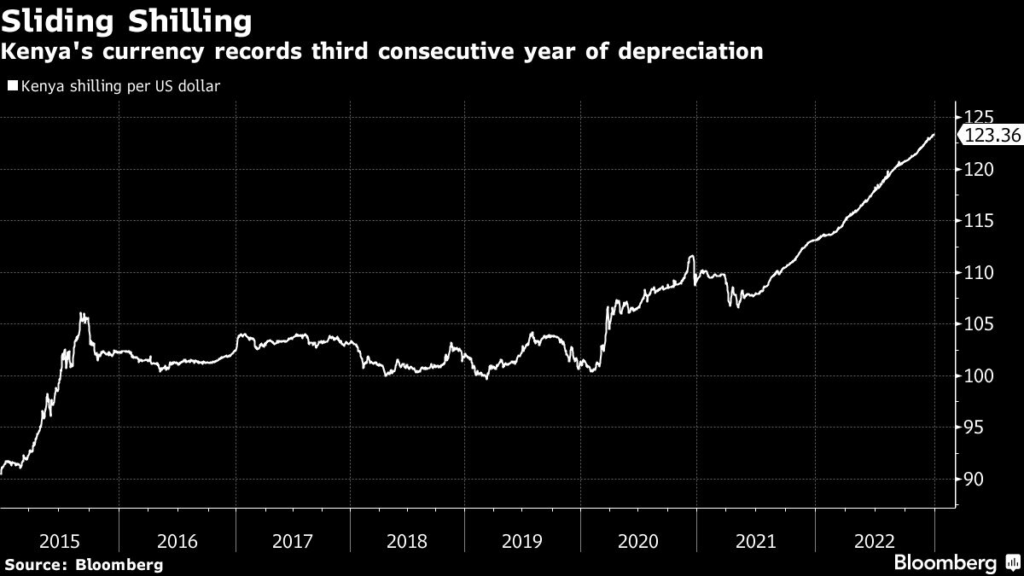Kenya’s currency fell the most in seven years and its benchmark stock index became Africa’s worst performer in 2022 after Russia’s war in Ukraine raised import costs and fueled inflation.
(Bloomberg) — Kenya’s currency fell the most in seven years and its benchmark stock index became Africa’s worst performer in 2022 after Russia’s war in Ukraine raised import costs and fueled inflation.
The currency fell to 123.4 to the dollar in Nairobi, extending its annual loss to almost 9%. Kenya’s imports rose 16% to $16.3 billion in the nine months to Sept. 30, while its trade deficit widened to $10.7 billion. Like most emerging market currencies, the shilling has also been hit by the dollar’s strength this year as investors sought safe havens following Russia’s war.
The shilling will remain “under pressure due to the increased dollar demand from energy importers on the back of the prevailing high global oil prices, and reduced dollar inflows from key export-earning sectors,” Nairobi-based AIB-AXYS Africa said in a note to clients.
African nations account for a quarter of the 20 worst-performing currencies in the world this year, according to data compiled by Bloomberg.
The double whammy of Russia’s invasion, which has resulted in scarcity of everything from fuel to grain, and interest rate increases by developed nations have seen investors dump African assets. Kenya’s key stock index dropped almost 24% drop, the biggest decline since 2011 and making it the region’s worst performer in local-currency terms.
Safaricom Plc, which accounts for more than half of the market capitalization of the 63-member Nairobi Securities Exchange Ltd. All Share Index, plunged 36%.
East Africa’s biggest company by value “suffered from a global downturn in investor sentiment, driven by concerns over rising interest rates and amplified by deteriorating macroeconomic conditions,” according to Nairobi-based NCBA Investment Bank Ltd.
Still, a $447 million loan from the International Monetary Fund helped boost Kenya’s foreign-exchange reserves to the highest level since August and may reduce pressure on the nation’s currency.
Reserves rose to $7.5 billion for the week ending Dec. 22 from $7.08 billion on Dec. 15, according to Central Bank of Kenya data. The holdings are sufficient to cover 4.2 months of imports.
(Updates with closing values.)
More stories like this are available on bloomberg.com
©2022 Bloomberg L.P.










